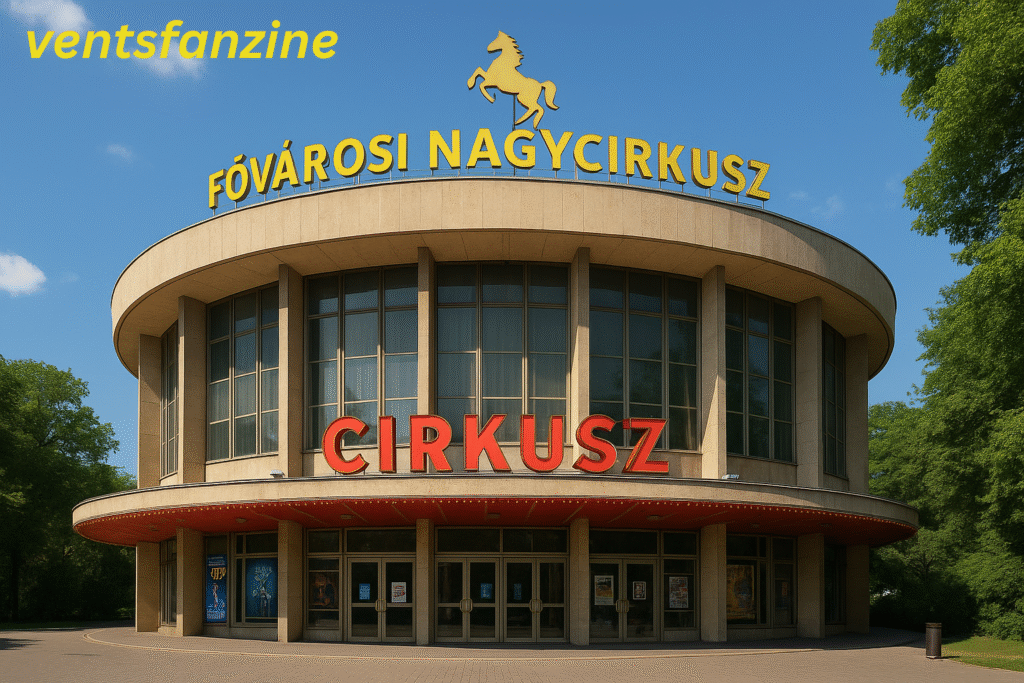
Introduction to Fővárosi Nagycirkusz
Located in Budapest’s famous Városliget (City Park), the Fővárosi Nagycirkusz, known internationally as the Capital Circus of Budapest, holds a distinctive place among European entertainment venues. As the only permanent stone circus building in Central Europe, it offers year-round circus performances, a feature that sets it apart from seasonal or traveling circuses throughout the region. With its history deeply rooted in Hungarian cultural tradition, the circus continues to entertain and educate audiences, reflecting the nation’s affection for circus arts.
Historical Significance of Fővárosi Nagycirkusz
The history of Fővárosi Nagycirkusz dates back to the late 19th century. Officially established in 1889 under the direction of German-Dutch circus director Ede Wulff, the initial structure was a temporary iron and metal construction, with a large seating capacity. Over the decades, the circus experienced various transformations, influenced significantly by historical events, including two World Wars and numerous political changes.
In the early 20th century, under the management of Matvey Beketov, the circus became a renowned destination for both Hungarian citizens and international visitors, known at the time as Beketow Circus. By the mid-1930s, it entered a new era of growth and popularity under entrepreneur György Fényes. Post-World War II, the circus rapidly re-established itself as a cornerstone of Budapest’s cultural life, culminating in the significant renovation of the facility completed in 1971, which transformed it into the permanent stone structure we see today.
Present Services at Fővárosi Nagycirkusz
Today, Fővárosi Nagycirkusz remains a vibrant cultural center, renowned for its diverse programming. Performances range from classic acts involving acrobats, jugglers, and clowns, to modern spectacles integrating theatrical storytelling with traditional circus skills. Unlike many circuses, the emphasis at Fővárosi Nagycirkusz is on artistic and human talent, with a reduced focus on animal performances in line with contemporary ethical standards.
The circus also hosts significant international events, notably the prestigious International Circus Festival of Budapest, a biennial gathering attracting top circus talent from around the globe. Additionally, the facility serves multiple purposes beyond circus performances, including concerts, exhibitions, and cultural showcases, making it a versatile venue for diverse artistic expressions.
The Significance of Fővárosi Nagycirkusz in Hungarian Cultural Heritage
Fővárosi Nagycirkusz is deeply intertwined with Hungarian national identity and cultural heritage. Its longstanding presence in Budapest symbolizes the enduring value Hungarians place on performance art and live entertainment. The circus acts as a living museum, preserving traditional European circus arts while simultaneously evolving to incorporate contemporary performance techniques and artistic trends.
Moreover, the circus has nurtured generations of Hungarian performers who have become ambassadors for Hungarian culture internationally. Through training programs and artistic collaborations, Fővárosi Nagycirkusz actively contributes to maintaining and enhancing Hungary’s cultural footprint globally.
Contributions to Cultural and Societal Development
Beyond mere entertainment, Fővárosi Nagycirkusz plays an essential role in societal and cultural enrichment. It offers specialized workshops and educational initiatives aimed at young artists, fostering the next generation of circus talent. These programs not only help preserve circus traditions but also provide professional pathways for aspiring performers.
Community engagement is another key contribution, with the circus frequently organizing performances tailored specifically for schools, families, and special-needs audiences. These initiatives underline the institution’s commitment to inclusivity and accessibility, reinforcing its role as a community-focused cultural asset.
What to Anticipate During a Visit
Visitors to Fővárosi Nagycirkusz can expect an immersive and captivating experience. The venue’s intimate size ensures excellent visibility from all seats, allowing audiences to fully appreciate each act. Performances typically blend classical circus disciplines with innovative storytelling, creating a spectacle appealing to both traditionalists and those seeking modern interpretations.
Facilities within the circus are modern and audience-friendly, ensuring comfort throughout the performances. Programs frequently change, so returning visitors are treated to fresh experiences, showcasing both Hungarian and international performers.
Important Details Regarding Fővárosi Nagycirkusz
- Location: Városliget, Állatkerti körút 12/a, Budapest, Hungary
- Accessibility: The circus is conveniently accessible via public transport, positioned near other popular attractions like Budapest Zoo and Széchenyi Thermal Bath.
- Seating: Approximately 1,450 seats, designed for optimal viewing experiences.
- Ticketing: Advance ticket purchases are recommended, particularly for weekend and holiday performances. Tickets are available online and at the circus box office.
Conclusion on Fővárosi Nagycirkusz
The Fővárosi Nagycirkusz stands as a testament to Hungary’s rich cultural tapestry, bridging historical traditions with contemporary performance arts. Its continuing relevance in Hungary’s cultural landscape is assured by its ability to adapt, educate, and inspire, solidifying its status not just as entertainment, but as a vital cultural institution. Whether for local families or international visitors, a visit to the Fővárosi Nagycirkusz offers a profound insight into Hungarian culture, circus artistry, and community spirit.






